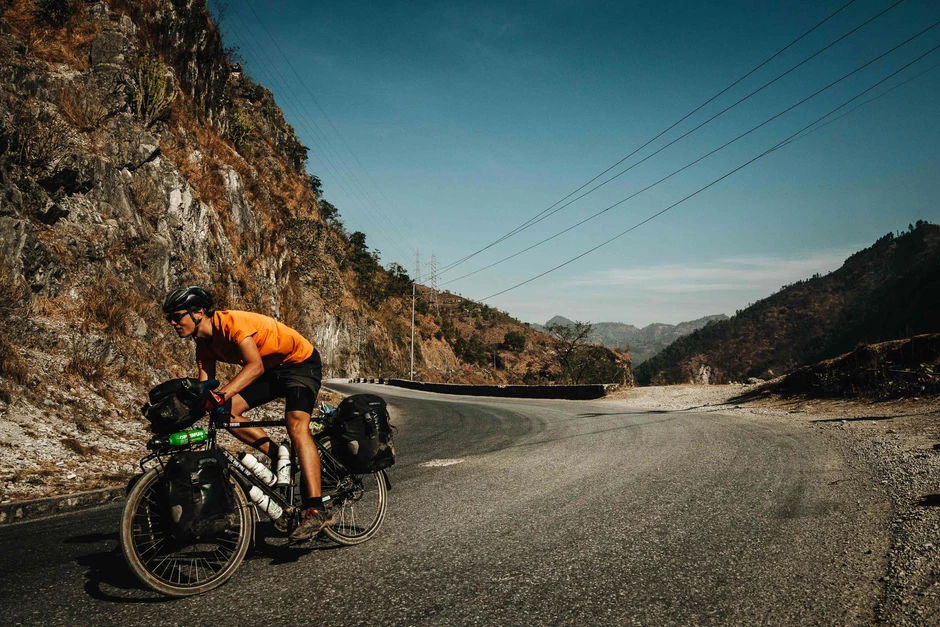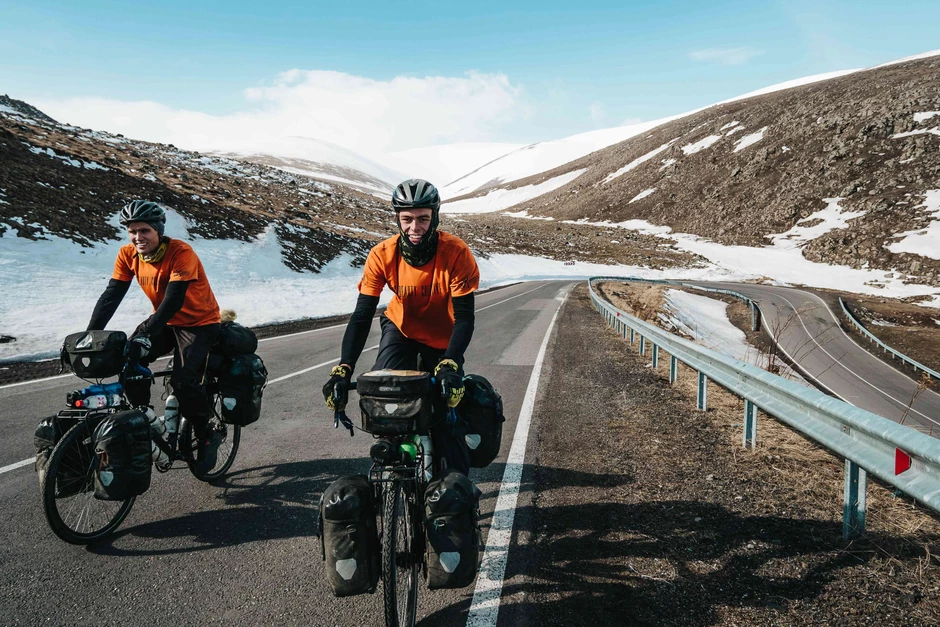Words: Freddie Gillies
Images: Sean Wakely
It was a cold morning as we pushed our bikes out of the small apartment in Kolkata. A low fog hung over the city and stretched over the Hooghly River and across the Maidan. We were fresh off three weeks away from the bikes and so it was a bit daunting getting back into the saddle. Colourful trucks roared past us as we pedalled our way over the bridge and onto the northern side of the banks. Visibility was poor, and smoke billowed from roadside fires and truck exhausts. The smell of burning plastic stung our nostrils as we began to get into rhythm.
We pulled into a small highway petrol station to snack on some muesli bars we’d stocked up on the night before. It was getting colder as we got further from the city. Not long after we parked the bikes against the side of a roadside building, a small group of young men began to crowd around. The crowd grew and stood motionless and close by, staring at us and the bikes. With the presence of the crowd growing ever more noticeable, we took to the bikes again and pushed off into the foggy morning.
The ride up West Bengal continued in much the same fashion. We stopped regularly for breaks in the small chai shacks that lined the roadside. Large piles of rubbish were always burning, and locals—with scarves drawn around their necks to ward off the cold—stood around rubbing hands together for warmth. A crowd would amass every time we stopped; we quickly learned to not give it a second thought. The fields to either side of the road were a yellow wash of mustard flowers, although most of the time we were enveloped in a tunnel of fog. Each night we stopped and parked the bikes in a beat-up hotel. We’d wander out onto the dusty streets and find some tiny restaurant, where we’d try and keep a low profile as we ate our thali plates.
After six days of riding we arrived at the border town near Siliguri. Tea plantations lined the roads as we pedalled towards the bridge separating India from Nepal. We enjoyed one last chai on the roadside and were joined by a friendly cow who wandered inside the shop and started eating leftovers.
Masses of people were walking and cycling over the border. A little beyond the Nepalese border town we found ourselves in open spaces. Forests enveloped the road in between towns, and the rivers that poured down from the Himalayas were clear and fresh. We stopped in a small town to get cash and I noticed something was different.
“Where are the people?” I asked Sean and Arthur. Normally a crowd of people would have developed in the five minutes we’d already been stopped as Sean worked the ATM.
“There are a couple over there. Look, there are women!” said Arthur. We’d seen very few women in public in West Bengal. The crowds that developed there were solely male.
We cycled along the flatlands, known as the Terai, at the base of the Himalayas. Locals would often invite us into their homes and share food with us. A group of young teens were fundraising for a local hospital. They spoke eloquently in English and reflected the progressive ideals we were starting to see in many of the Nepalese people. The road on the Terai, for the most part, was smooth. Occasionally a truck would pass close or we would be forced off the road because of a questionable overtaking manoeuvre. We learned to deal with that and keep pedalling.
After a few days of riding we arrived at the Chitwan National Park. That night we sat outside overlooking the river and enjoyed a few cold beers. Alligators floated motionless upon the water. In the distance a rhino was bathing in the river. The forest over the river was quiet, with a low mist hanging ove. The next day, a rest day for us after ten straight days of riding, we walked 21 kilometres through the park. We encountered bears and rhinos at close range; our guides had nothing but bamboo sticks to ward them off.
The road to Kathmandu was ahead of us. We all knew it was going to be a big day. We had only 80 kms to ride but it involved a series of steep mountain passes on very poorly maintained roads. We set off at 7.30 am from Hetauda. The road snaked its way through the valley. Colourful prayer flags fluttered in the light morning breeze. It was cold in the valleys, but we soon began to climb high above the river and into the sunlight. We tackled switchback after switchback. The road was so narrow at times that only one vehicle could pass. Our 50 kg touring bikes lumbered up the side of the mountain with us drawing sharper and sharper breaths as the altitude started to become a factor. At 2 pm we summited the first and largest of three mountains. We had a Nepali thali plate overlooking the valley at 2,000 metres elevation. The descent was dangerous and potholed. Our brakes screamed in protest as we guided our front wheels around the holes in the road. It was 7 pm and dark when we arrived in Kathmandu, faces stained with dirt and dried sweat.
We cycled on across Nepal, staying with locals in small villages and beholding the majesty of the Himalayas. It was a wonderful feeling staring at the summit of Annapurna, 8,000 metres above sea level, and knowing we’d ridden our bicycles there. Each day we soaked in the mountain views, the expanses of forest, the signs alerting locals to wild tigers, the endless thali plates, the chai stops, and the glorious cycling. On the way back to the Terai we managed our biggest day of climbing totalling 4,300 metres, which we were rather pleased with on the heavily weighted touring bikes. Our visas for Nepal ran out and so we re-entered India and began the push south towards Agra. We stood in front of the Taj Mahal as the sun’s first rays hit the pearly white dome. Thousands of tourists jostled for space to get the same symmetrical photo of the great monument.
After a quick stop in Rajasthan we cycled into Delhi, the sprawling Indian capital city. The traffic was heavy as we cycled in on what appeared to be a five-lane motorway. No one seemed to mind that we were there. Sitting down at a small restaurant that evening we celebrated our arrival in the capital with a beer and curry. It was the end of our Asian leg of the trip and we were excited to fly to Georgia and start the next. That night my stomach started rumbling. It boiled and churned and sent me reeling to the bathroom. For four days in Delhi we were sick. We were sick for the flight to Georgia. Three sick days in Tbilisi turned into four and then five. The capital of the former Soviet state was cold and hemmed in by snow-capped mountains. The road to Istanbul felt very long and threatening in those moments.
The day finally came when we felt ready to go. It was three degrees outside when we loaded our panniers onto the steel-framed bikes. As we climbed it got colder and colder. Sleet was coming down heavily and our hands became wet inside our gloves. Clutching the alloy brakes on downhills became so hard we had to descend holding one hand behind our backs to block them from the wind chill. Before the summit of the highest pass I looked across to Arthur and saw the sweat in his hair had frozen.
The days in Georgia continued to challenge us. Every day we tackled snowy passes and freezing temperatures. One pass was so snowed under that we had to turn back. It was a relief to finally make it to the Black Sea coast where it was considerably warmer. We crossed into Turkey and started making our way west towards Istanbul. Mosques with towering parapets dotted the coastline and sang the call to prayer throughout the day. The locals welcomed us warmly, often offering tea on the roadside or a place to camp. Many nights we were hosted in the homes of local Turks. The days on the bike were long and the wind strong and at our heads. Every day we rode from 7.30 until 5 pm when we would find a campsite somewhere on the side of the road.
Our route took us inland to Cappadocia, a place famous for its intricate rock formations and underground city. There we camped in a cave for two nights and rested our weary bodies. It had been extremely taxing work making it into the centre of the country. We’d crossed many mountain passes and survived many cold nights in the tents. As we awoke one morning in our small cave, we saw hundreds of hot air balloons silently gliding over the rock formations. We sipped our morning tea remembering why we were suffering so much up all those mountain passes and through all those cold nights.
Out of Ankara we camped on the top of a mountain range. It was so cold that night that all the water in our bottles had frozen completely solid. We had to forgo our morning coffee and wait until the sun came out and thawed the ice before we could drink again. We descended back to the coast and the warmth of sea level. Istanbul was getting closer and closer with each day on the gloriously smooth Turkish roads. The night before we arrived in the great city we camped in an orchard overlooking a lake. It was the last quiet we had before the madness of the ride into Turkey’s supercity. The road was dense with traffic. There were four lanes in each direction and little shoulder for us to ride on. Cars would pull recklessly onto the road and then swing off in front of us with similar disregard. We faced 120 kms of terror before reaching our accommodation that night; a lovely local man was hosting us. In typical Turkish fashion he cooked for us and opened his home. Turkish hospitality is second to none.
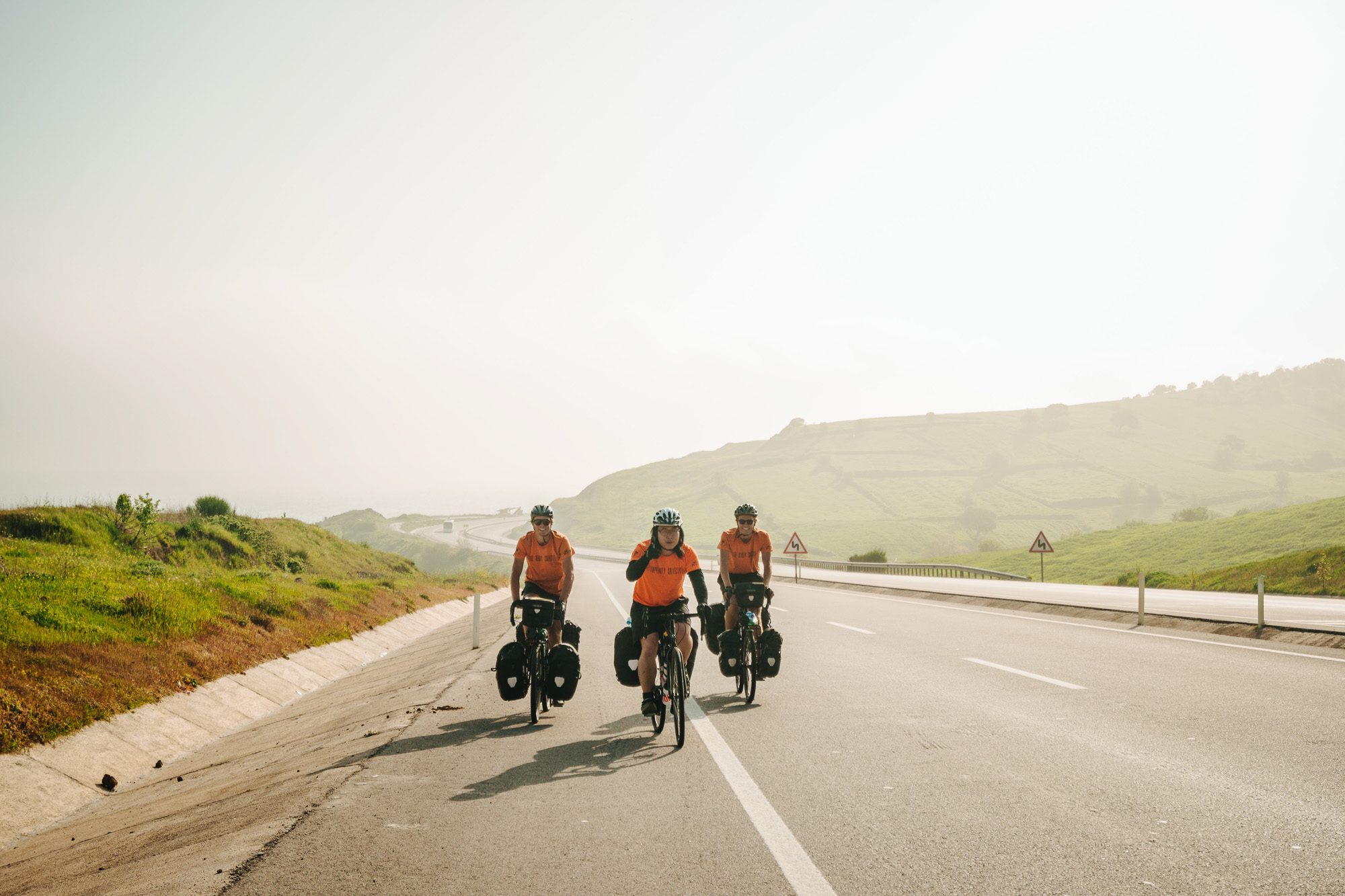
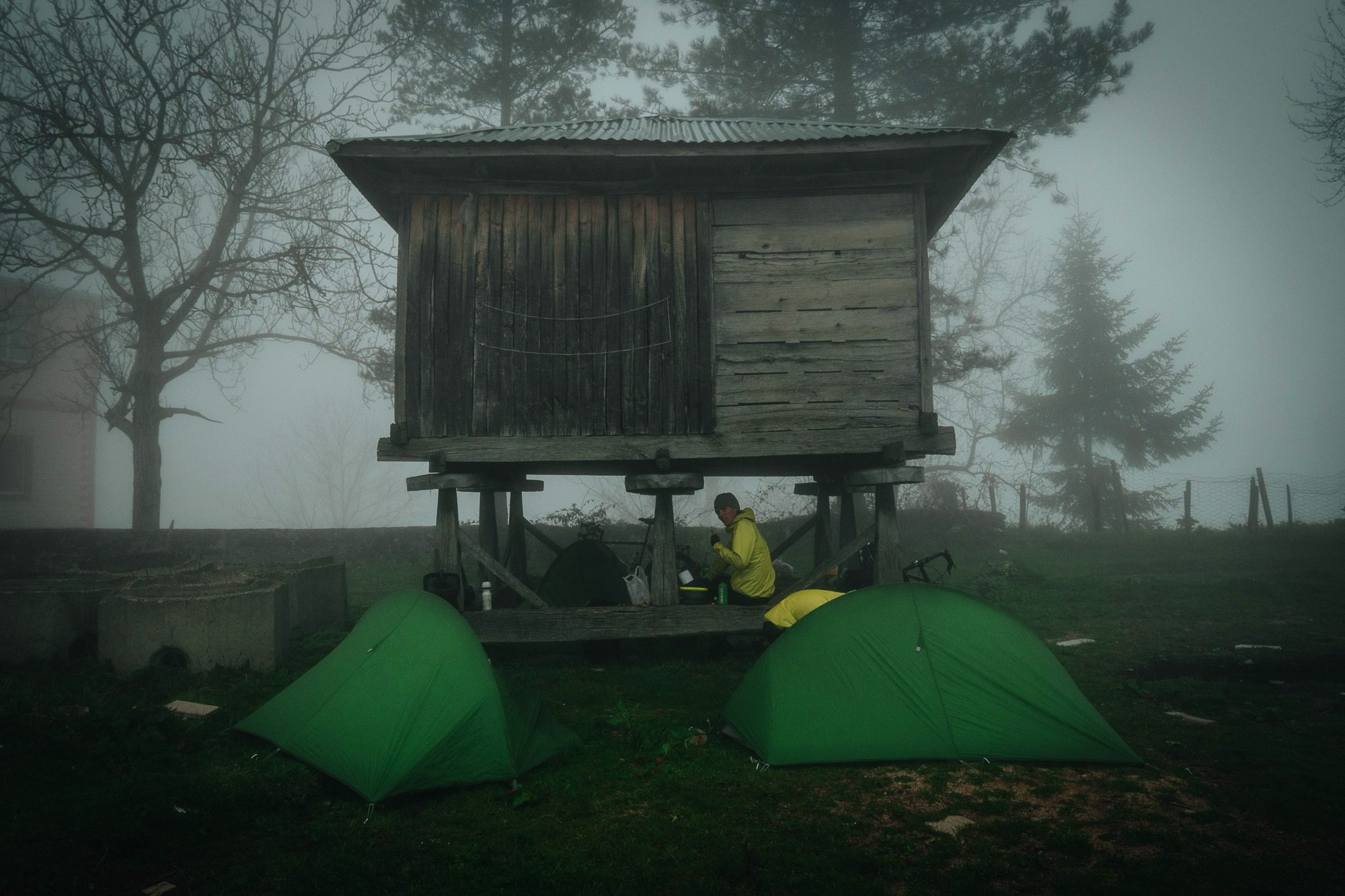
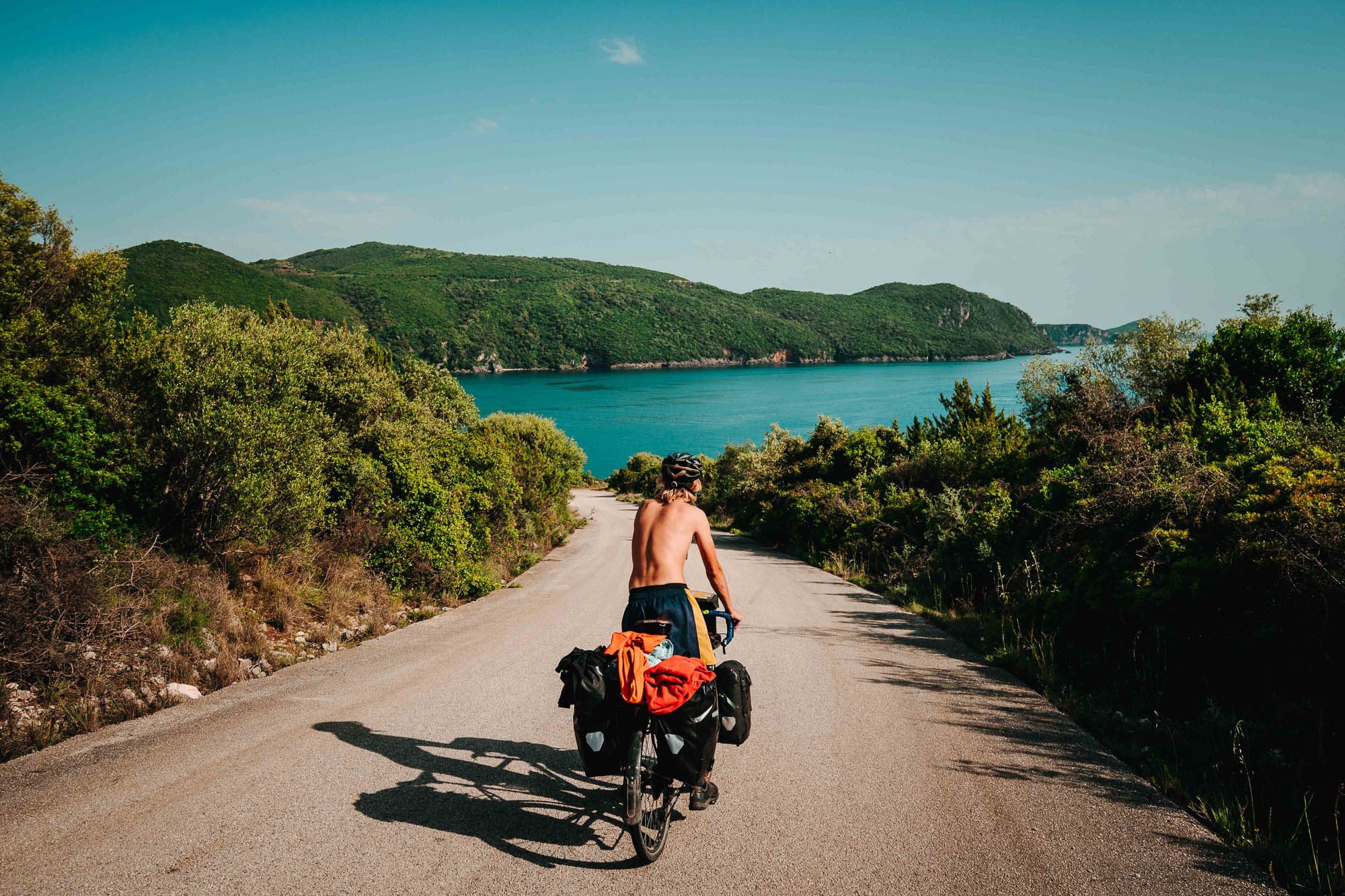
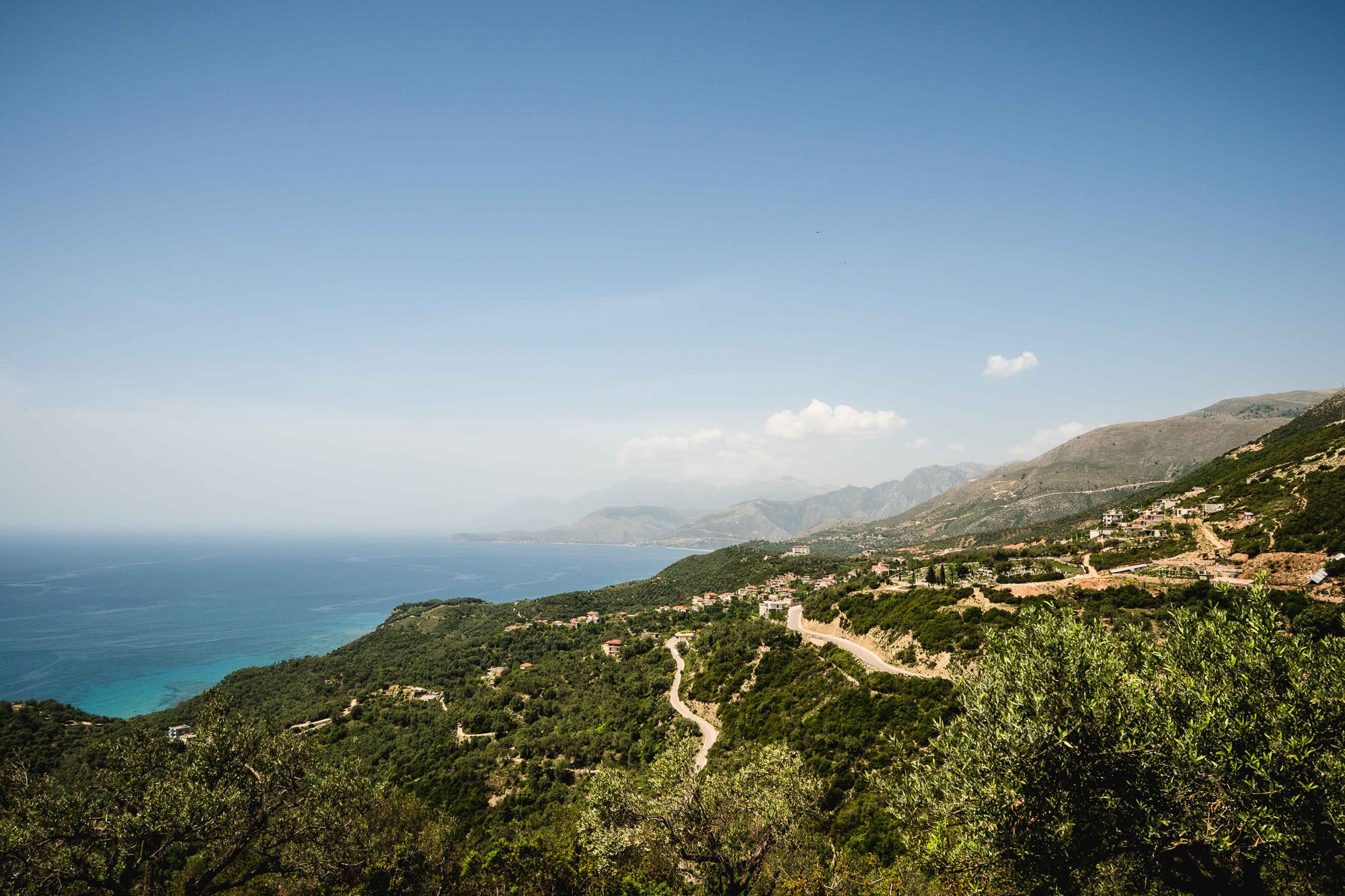
Our arrival in Istanbul signalled the end of the trip as we’d known it. Our friend Timmy joined us with a new bike, a beer belly, and a good attitude. We pulled him over hills and forced him to ride much further and longer than he’d ever dreamed of doing. We visited the memorial at Gallipoli and then continued down the coast towards Izmir. Beyond lay the Greek islands. The sun was beginning to shine and the last of winter’s chill faded. Each night we camped on the sea and would start each morning with a dip in the Aegean. The days were simple and the evenings equally so. We watched the sun go down each night as we cooked our meal on the camp stove. Our homes were our bicycles and all that we carried on them. Our trip across Asia was truly remarkable and defined by the wonderfully hospitable people we met and the challenging terrain we crossed. As I looked out over the sea from the comfort of our campsite one evening I smiled to myself. We were chasing the dream of a lifetime. All that stood between us and London was the European mainland. Every night I dreamed. Our arrival in London was getting closer and closer.


